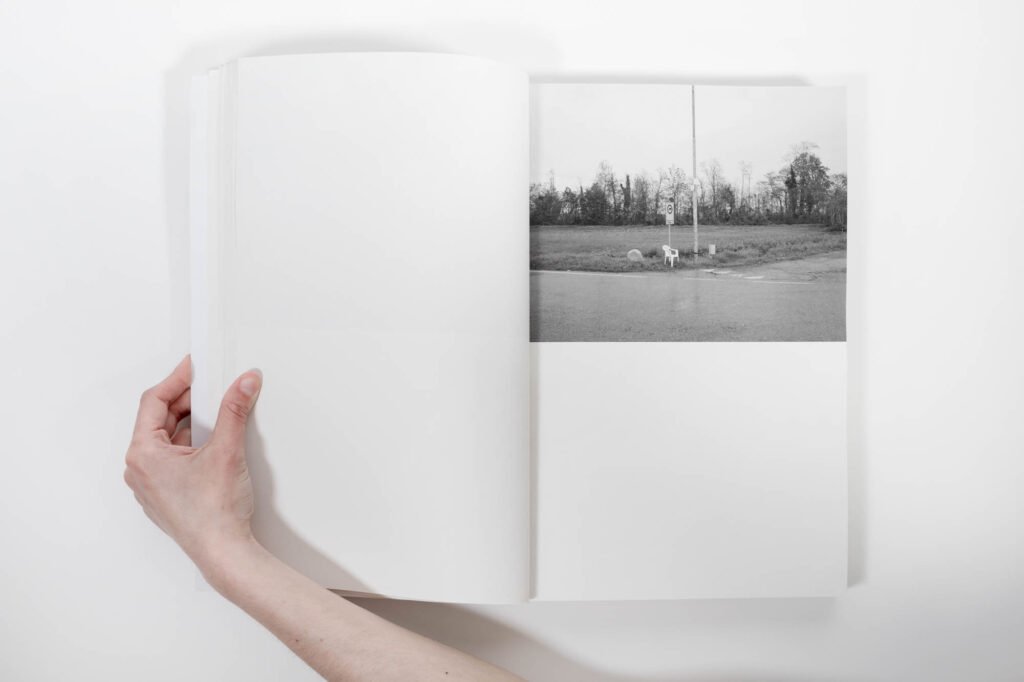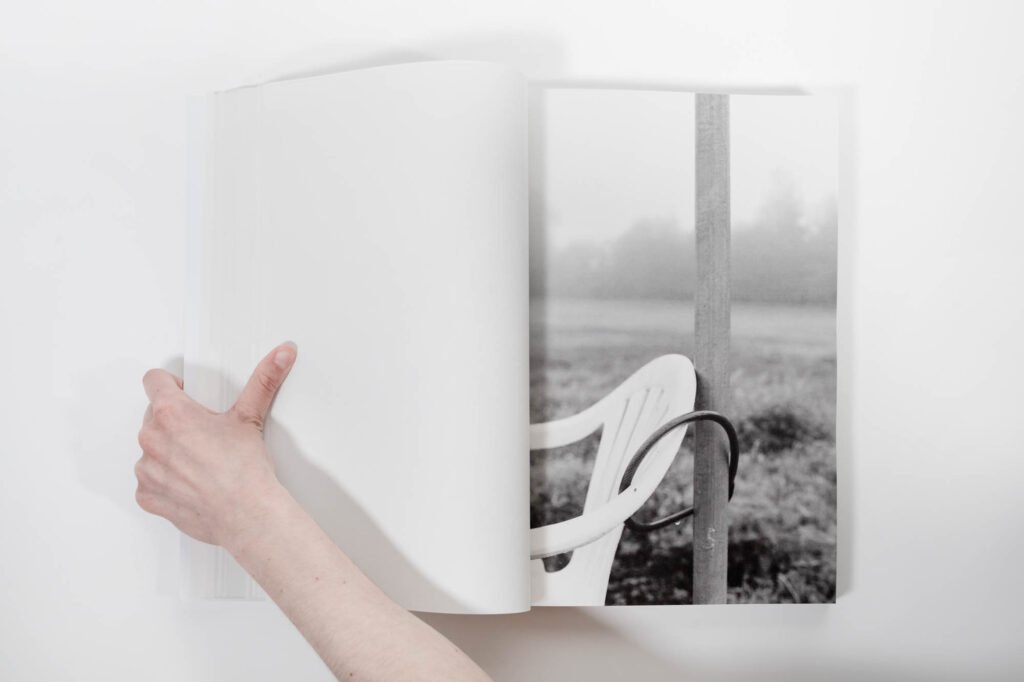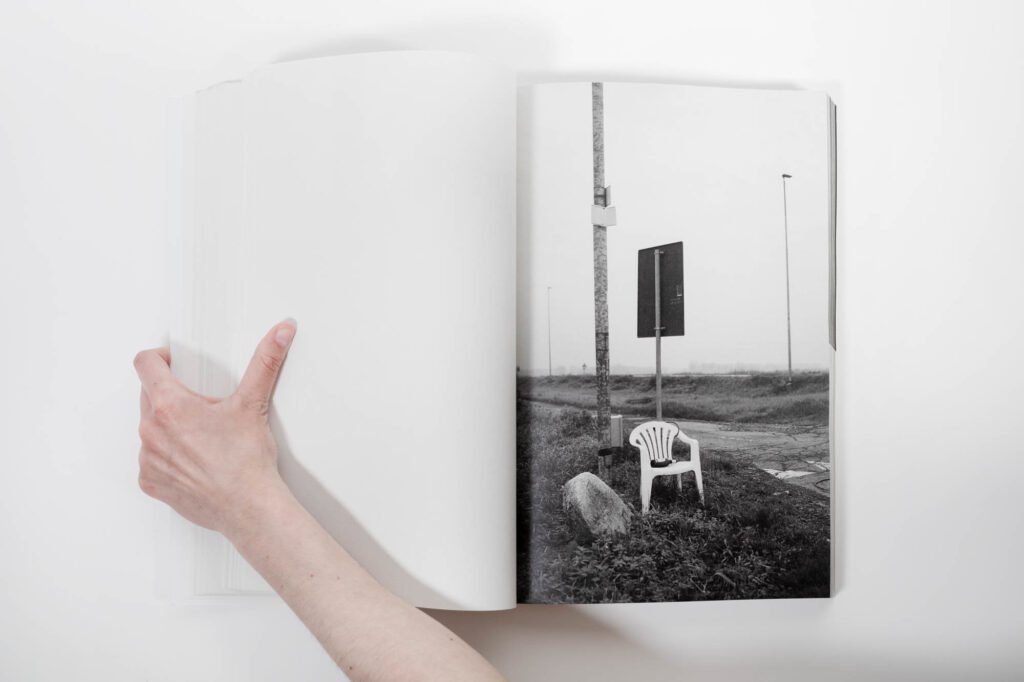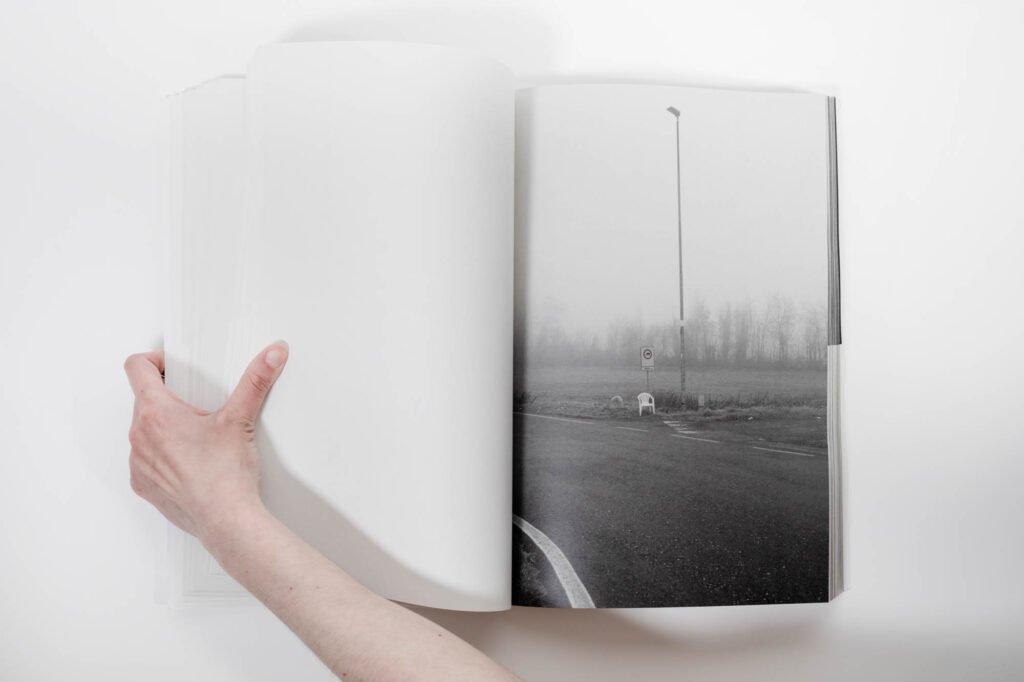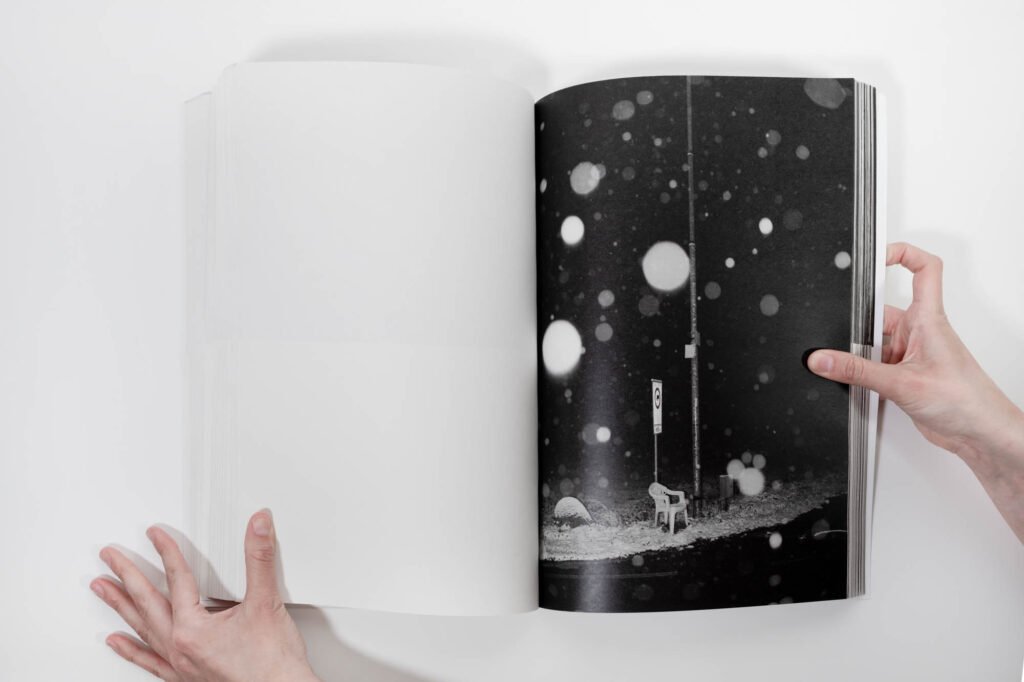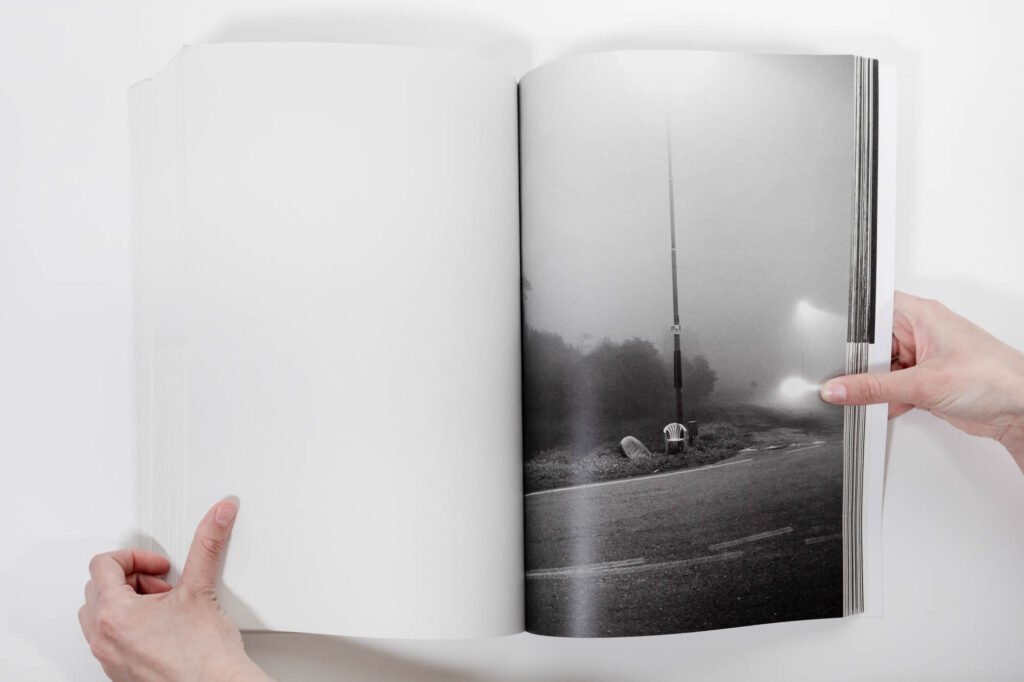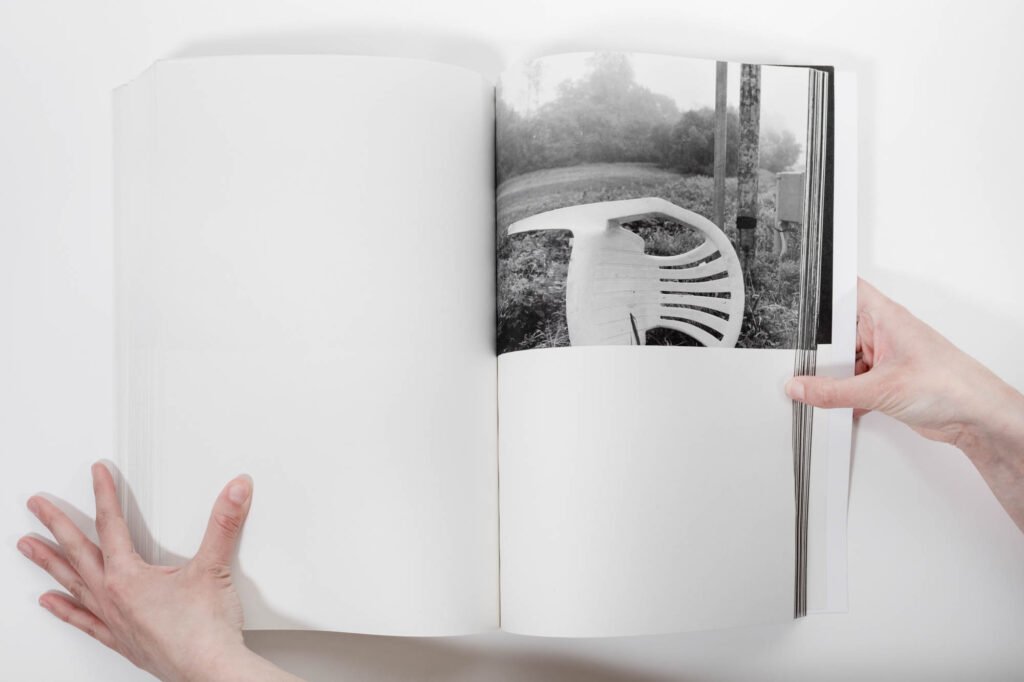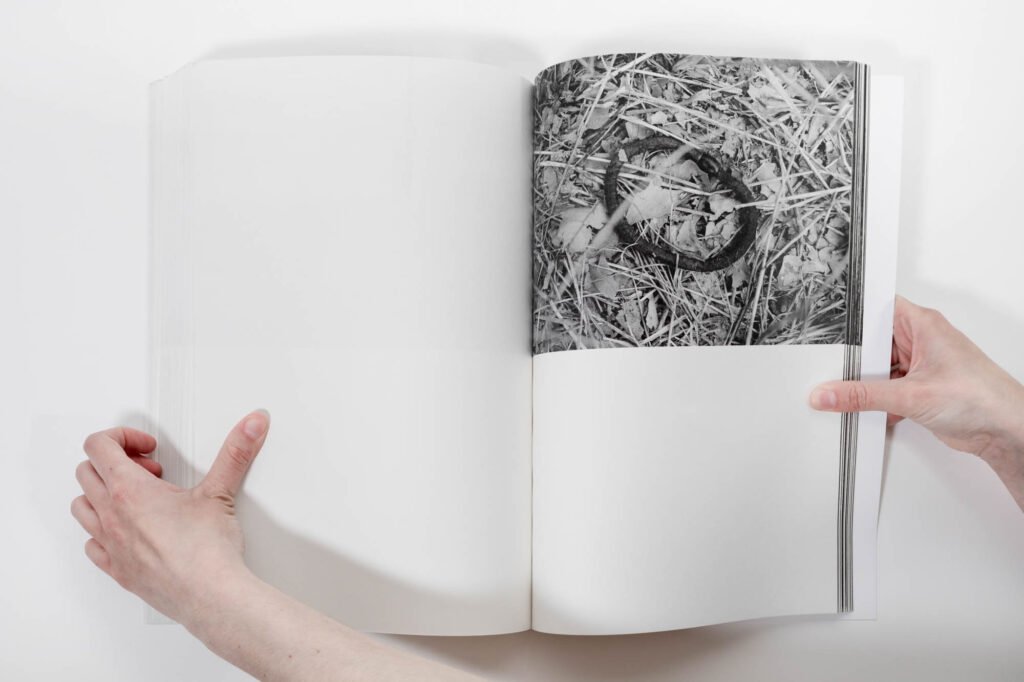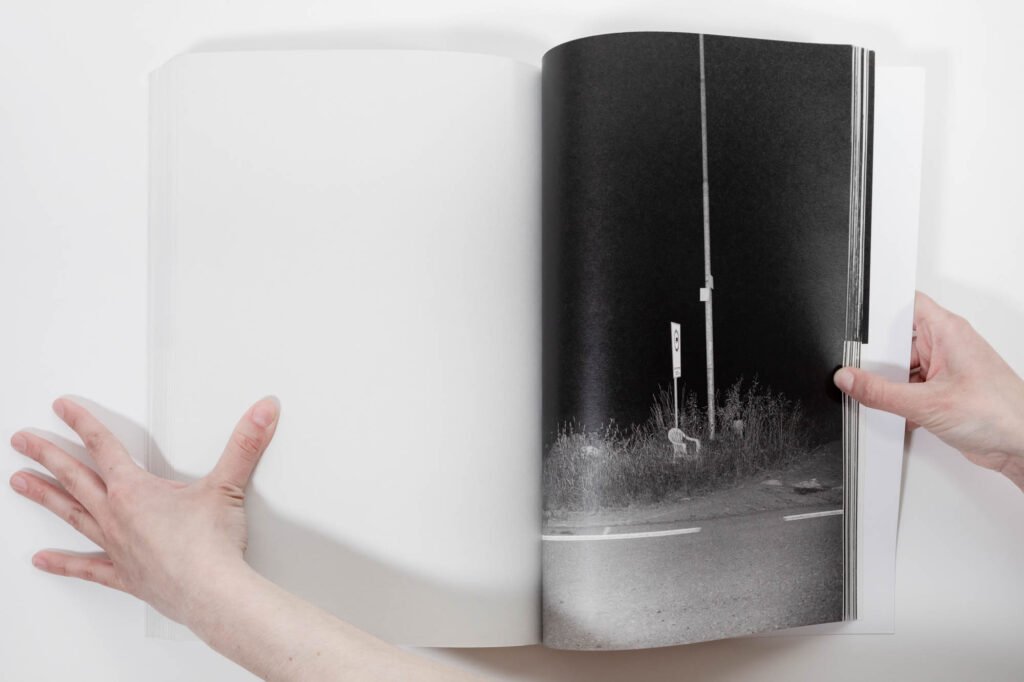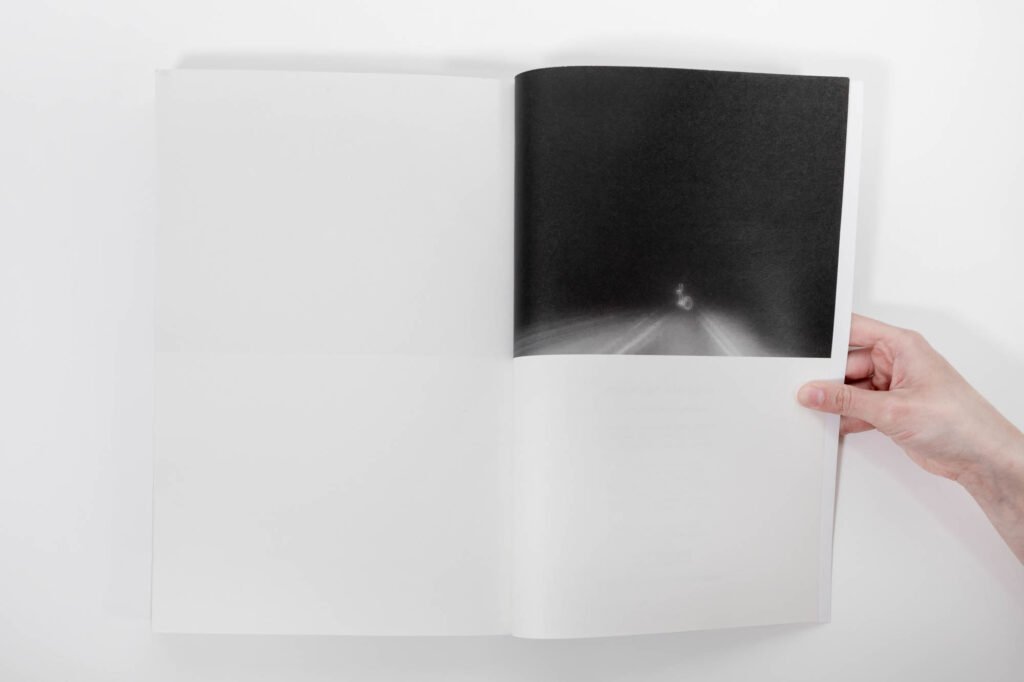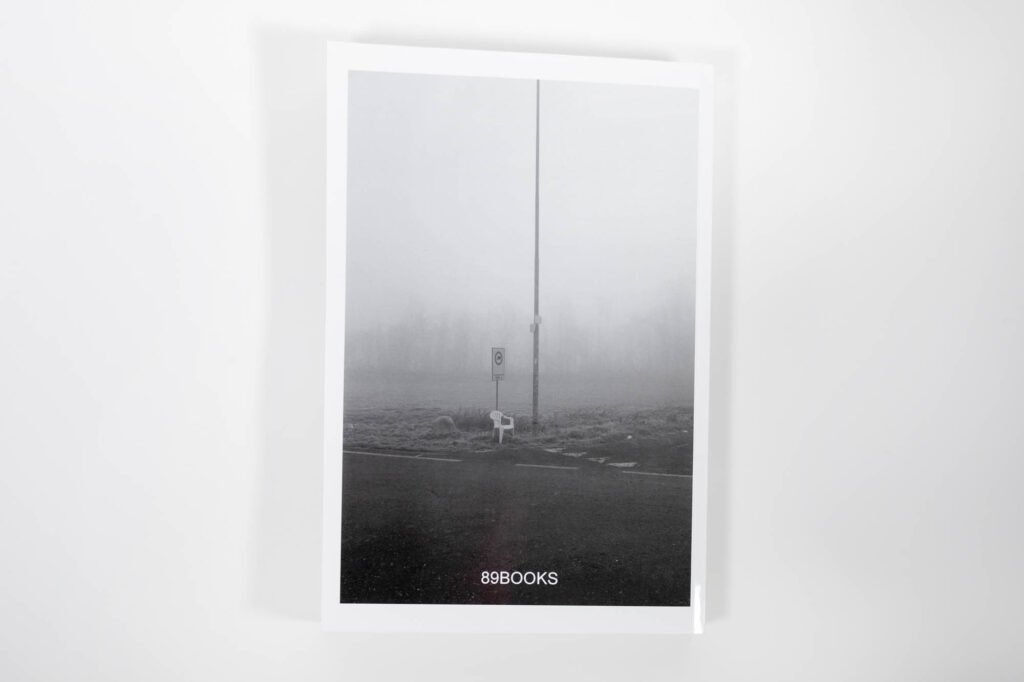“A photograph is both a pseudo-presence and a token of absence”.
Susan Sontag
Undoubtedly venturing from the path first trodden by Roland Barthes among others, Susan Sontag pierces the heart of the nature of photographs, for them to be tracks of the that-has-been, evidence of a persona or inanimate object. It is in these premises that Attilio Solzi’s “The Absence” finds a breeding ground for exchange. Thus, the artist’s book is a year-long documentation of an empty sex worker’s chair along the road that connects the cities of Milan and Cremona, in Northern Italy. Solzi’s records are both the physical evidence of a sex worker’s presence at night and their absence in the early mornings or afternoons. Like a forensic photographer, he objectively examines the scene substantiating the presence of an unknown person beyond their present belongings.
The gaze finds pleasure in the repetition of the white object-chair, sometimes seen from a distance, some others intruded from up close. Although the context is given, viewers could think of any place and the work of the imagination still acts upon the spontaneous scenes which resemble stages from the Theatre of the Absurd. Indeed the meaningless shapes here the narrative in the form of waste items that articulate time over an immutable and suspended non-place. The waste abandoned down the days around the chair slowly turn into tokens, and per se, they stand as metaphors of the discarded condition of sex workers. The photographs seem to reinforce the notion that sex workers are waste belonging to non-places, while simultaneously inviting a neutral gaze that undresses the minimalism of the images to the bone examining them as a mere composition exercise.
The sex worker is present in the images only through the relation to another affirmation of presence, that is, the photographs of the chairs and the place. The latter, although anonymous, has a strong cultural connotation. Indeed, if not accompanied by the artist’s introductory words, whoever is not familiar with the countryside of Italy, might not associate the presented scenario with sex workers’ equipment while browsing through the book. Far from being in a condition of displacement, the chair reveals itself as an intrinsic meaning of the landscape depicted. Solzi practices an exercise of indexicalisation to discover the dynamic relation existing between an object photographed and the sign it is constituted by, using Peirce’s words from his sign theory. The latter is what the object represents: the object-chair existing in front of Solzi’s camera is the sign or representation of a sex worker and in the photograph, the relation between the object and the sign becomes “direct” as if it was a material trace of reality impressed on a photosensitive surface. The compact and dense book finds its strength in the repetition and reiteration of an absence, which becomes more and more visually evident throughout the journey through seasons and time that Solzi has taken up. From the start to the end, he stands as a pseudo-presence too, merging with the photographic device and constituting a hybrid human-machine, able to objectively record reality while at the same time proposing his own peculiar artistic language.
Attilio Solzi (Soresina, Italy, 1962) approach to photography is so unconventional that makes one question what is the limit of a pure documention of a grotesque reality and the playful interaction between photographer and subject. The focus of his work is the image of the body and its representation.


